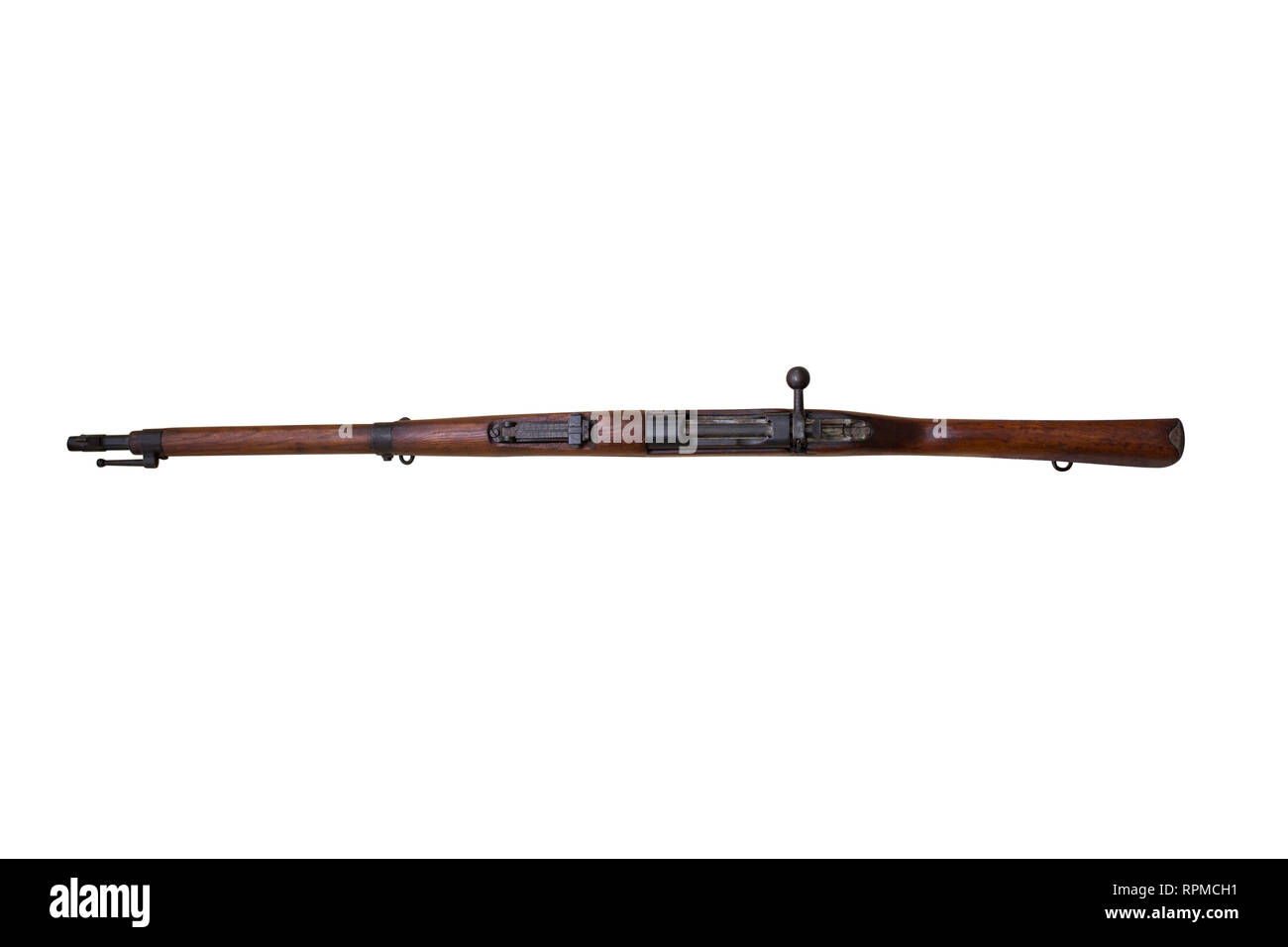

Hungary started to convert their rifles to the same 8x56R ammunition in 1931, with the upgraded rifles being marked with the letter "H" on the receiver ring. These rifles were designated as M95/30, and marked with the letter "S" on the receiver ring. Since 1930 Austria converted most of the M95 rifles to the more powerful 8x56R M30 ammunition, using the same Mannlicher en bloc clips. This conversion gave away with original Mannlicher en bloc clip, and replaced it with Mauser stripper clips. These converted rifles featured shorter 58 cm barrels, were designated as M95/24 and used in Yugoslavia and Bulgaria. Originally produced in 8x50R caliber, in 1924 some of M95 rifles were converted to the German 7.92x57 Mauser (also known as 8x57 Mauser) ammunition. This rifle was issued to Austro-Hungarian army, and, after the fall of the Empire, to the Austrian and Hungarian armies. More than 3 millions of M95 rifles were produced between 18. Based on his previous M1890 design, this rifle was manufactured in Austro-Hungarian Empire at state arms factories in Steyr (Austria) and Budapest (Hungary). The Steyr M1895 rifle, also known as Steyr-Mannlicher M95 straight pull rifle, was developed by famous Austrian arms designer Ferdinand Ritter Von Mannlicher. These conversions are prized by collectors for their relative scarcity and chambering in a commonly available round, but suffer from a fragile extractor and a lack of replacement parts.

The M95/24 is often mistakenly attributed to Bulgaria, but 7.92x57mm was never a standard caliber of the Bulgarian military. This conversion was designated M95/24 in Greece and M95M in Yugoslavia. Greece and Yugoslavia converted at least some of their captured M1895s to 7.92x57mm Mauser, fed by stripper clips instead of the original model's en-bloc clip system. Between the World Wars, both Austria and Hungary converted the majority of their rifles to fire the more powerful 8x56mmR round. The M1895 was originally chambered in the 8x50mmR cartridge.
STEYR MANNLICHER M95 LONG RIFLE FOR SALE MANUAL
Rate of fire is fairly high, for a manual action weapon, as there is no requirement to turn or twist the bolt when operating the weapon, but the bolt is very stiff and there is considerable recoil, especially on the stutzen (carbine) versions. It is also renowned for a high degree of reliability and sturdiness, although this requires decent care and maintenance with an extractor that is notoriously prone to breakage. The M1895 is unusual in employing a straight-pull bolt action, as opposed to the more common rotating bolt of other rifles. Many were found in the hands of African guerrillas in the 1970s. Numbers of these rifles also turned out in World War II, particularly in the hands of second line and reservist units. During World War II Romania employed much use of the Mannlicher rifle. It was employed by the Austro-Hungarian army throughout World War I, and post-war by both Austrian and Hungarian armies. The Steyr-Mannlicher M1895 rifle is an early bolt-action rifle, designed by Ferdinand Ritter von Mannlicher.


 0 kommentar(er)
0 kommentar(er)
